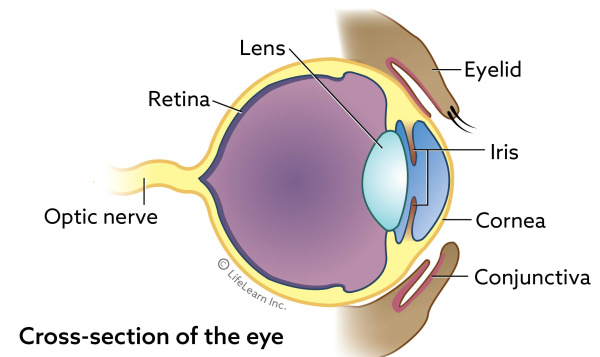Progressive Retinal Atrophy (Discovered in the Persian)
Progressive Retinal Atrophy (Discovered in the Persian) is a disorder that causes degeneration of the light sensing retina at the back of the eye, resulting in vision loss.
Key Signs are increased eye-shine (due to retinal degeneration), Reduced pupillary light reflexes, Loss of vision and eventually blindness:
- an early onset or inherited form, also called retinal dysplasia, which is typically diagnosed in kittens around two to three months of age, and
- a late onset form that is detected in adult cats, usually between the ages of two to five years.
The early onset form is commonly called retinal dysplasia and the late onset form is commonly called PRA.
PRA is not a painful condition, so it is rarely noticed in its earliest stages of development. The first sign that is usually noticed in a cat with PRA is night blindness. Affected cats tend to be nervous at night, may be reluctant to go into dark rooms, or may bump into things when the light is dim. Pet owners with cats that are developing PRA often observe that their pet's eyes have become very reflective when light shines on them, and that the pupils are more dilated than normal. Both eyes are affected.
If an affected cat never goes outdoors or into unfamiliar environments, the condition may not be observed until the cat is completely blind.
Inheritance - Progressive Retinal Atrophy is considered Autosomal Recessive
For autosomal recessive disorders, cats with two copies of the variant are at risk of developing the condition. Cats with one copy of the variant are considered carriers and are usually not at risk of developing the disorder. However, carriers of some complex variants grouped in this category may be associated with a low risk of developing the disorder. Individuals with one or two copies may pass the disorder-associated variant to their kittens if bred.
Cats that carry the gene are at risk cats are highly likely to show signs of this disease in their lifetime.
Caring for a cat with Persian Progressive Retinal Atrophy
Partner with your veterinarian to make a plan regarding your cat’s well-being, including any insights provided through genetic testing. If your pet is at risk or is showing signs of this disorder, then the first step is to speak with your veterinarian.
Here’s what a vet needs to know about Persian Progressive Atrophy
Progressive Retinal Atrophy (PRA) in Persian cats is characterized by an early-onset degeneration of the retinal photoreceptors with a rapid progression to blindness. The first clinical sign of the disease is typically the reduction of the pupillary reflexes in kittens as early as two to three weeks of age. Other signs may include a hyper-reflective tapetum and behaviorally evident visual deficits, such as accidentally bumping into things. The disease leads to a near complete loss of photoreceptors and, thus, blindness by sixteen to seventeen weeks of age. The disorder is classically diagnosed by an ophthalmoscopic examination.
Although this condition results in vision loss and eventual blindness, many cats adapt remarkably well to vision loss. Owners may find that it is helpful to keep the cat's main environment as stable as possible (avoid moving food bowl, water bowl, litter box, furniture, etc.) to help them navigate as vision worsens. To avoid startling the cat, speak to and stroke the cat before picking them up and set them back down in an area where they can easily orient themselves, such as next to their food bowl. Use toys that make a noise (ex. balls with bells) for play. Caretakers should take precautions to protect the cat from threats it cannot visually detect (ex. stairs, pools, moving vehicles). Owners should also be advised that their cat cannot safely roam freely outdoors due to its compromised vision.
Progressive Retinal Atrophy disease is autosomal recessive, meaning that two copies of the mutation are needed for disease signs to be shown. A carrier cat with one copy of the Persian Progressive Atrophy mutation can be safely bred with a clear cat with no copies of the Persian Progressive Atrophy mutation. About half of the kittens will have one copy (carriers) and half will have no copies of the Persian Progressive Atrophy mutation. Kittens in a litter which is expected to contain carriers should be tested prior to breeding.
